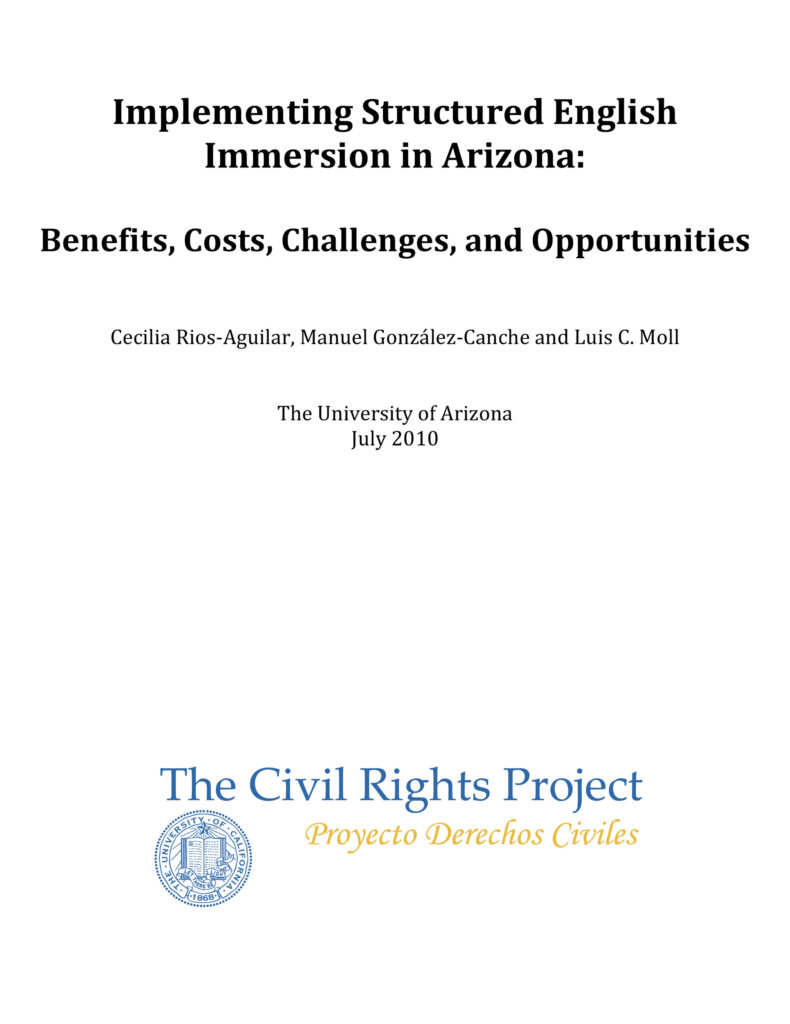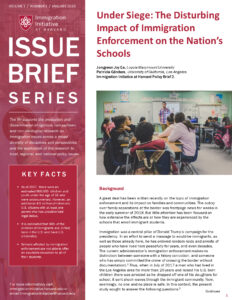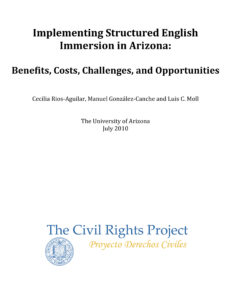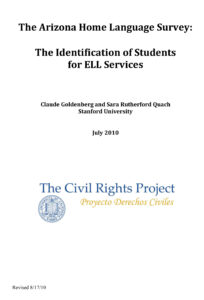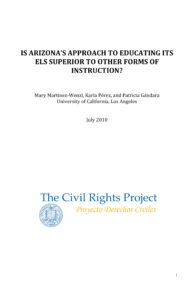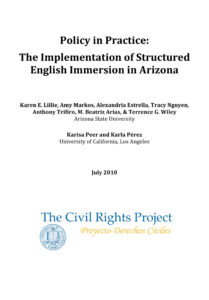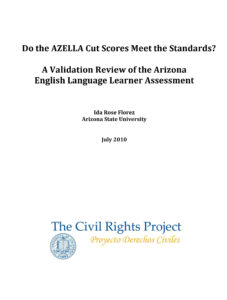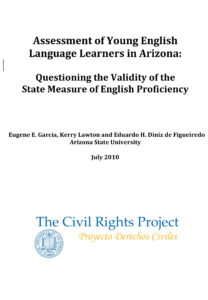Abstract:
This study conducted telephone interviews with 26 randomly selected English Language Coordinators from 26 Arizona school districts with enrollment patterns that were representative of the state as whole. Three primary questions were posed to the respondents:
- How is the 4-hour ELD block being implemented?
- What are the benefits of the 4-hour ELD block for students and for schools?
- What are the concerns about implementing the 4-hour ELD block?
The study found that all districts included in the study were implementing the 4 hour ELD block mandated for ELL students, but that there was considerable variation in some aspects of implementation. Although some districts recognized that their ELL students required additional support outside the 4-hour block, such as after school or summer programs (particularly for secondary students who were unable to take the courses they needed for graduation) and provided these services, two-thirds either chose not to or could not provide these services. With respect to benefits, the vast majority of ELCs focused on ELL students’ English language development and additional teacher training that was provided. ELCs appreciated that the English instruction was less fragmented than in the past. Although most respondents did not feel teacher training was of better quality than they had received in the past, they were pleased that there was more of it. Regarding the costs/concerns of the program, ELCs mentioned that the implementation of the 4-hour ELD block has: (1) neglected core areas of academic content that are critical for ELL students’ academic success and graduation, (2) contributed to ELL students’ isolation, (3) limited ELL students opportunities for on-time high school graduation, potentially increasing drop out–and for college readiness, and (4) assumed that English language learning can be accomplished for all ELL students within an unrealistic timeframe and under a set of unrealistic conditions.
For more information on the series, view the Arizona Educational Equity Project Overview.
The Arizona Educational Equity Project grew from the class action lawsuit of Horne v. Flores, which was initially brought against the state of Arizona in 1992 on behalf of English language learners (ELLs) there. The case reached the U.S. Supreme Court, which issued a ruling on June 25, 2009, establishing new legal standards for the EEOA but also returning the case to the Federal District Court in Arizona, to examine Arizona’s instructional policies for ELLs. The issues argued in the Arizona court had important implications for the educational rights of the tenth of U.S. students classified as ELL and for the federal law that protects them. The challenge to the research community was to provide the best possible information on how ELL students were faring under current Arizona educational policies. The Civil Rights Project organized the Arizona Educational Equity Project to generate the most up-to-date research on the equality of educational opportunity for English learners.
In compliance with the UC Open Access Policy, this report has been made available on eScholarship:
